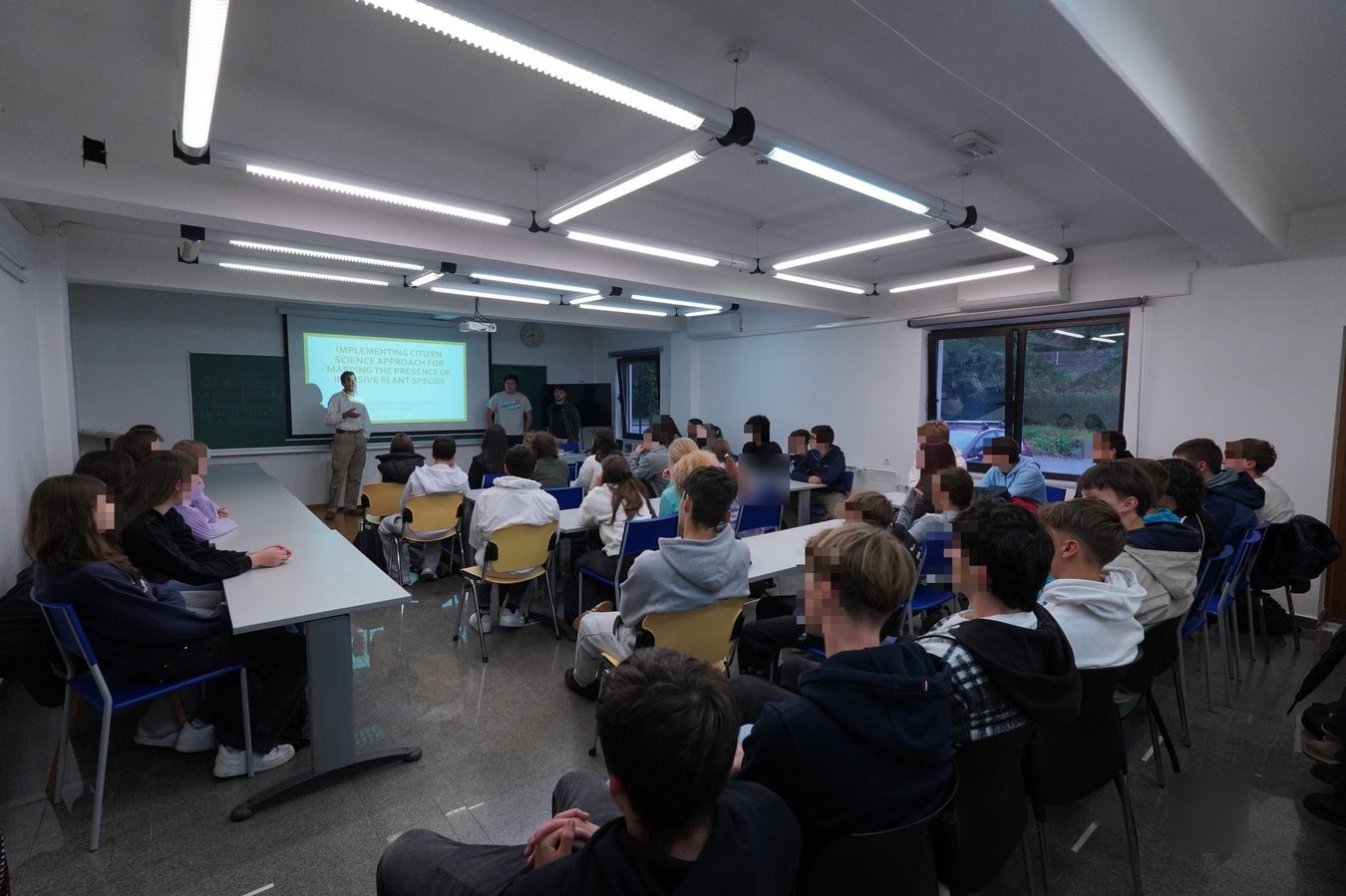ACROSS Alliance Open Science Week at UNG: Presentation of the students' environmental project on citizen science and invasive plant species, 23. 10. 2025
As part of the Open Science Week of the ACROSS European Cross-Border University Alliance, the University of Nova Gorica hosted on October 23, 2025, secondary-school students from the State Educational Institute with Slovenian as the language of instruction Simon Gregorčič Gorizia (Italy). From March to July this year, they participated in an engaging student environmental project of the School of Environmental Sciences, focused on citizen science and non-native plant species.
In the first part of the event, undergraduate students of the study programme Environment and members of the project team, Tilen Curk and Maks Trček, presented to the visiting students and their teachers the results of the student project Introducing the Citizen Science Approach to Mapping the Presence of Invasive Plant Species. The students from the Slovenian minority community in Italy actively contributed to identifying non-native plant species in the wider cross-border Gorizia region. Under the mentorship of their teachers and in collaboration with the university project team, they used the Pl@ntNet mobile application, which operates through artificial intelligence, to photograph non-native plant species observed in the field. Each photograph was stored in the Pl@ntNet database and automatically georeferenced using the GPS function of their mobile devices. The data on the recorded plant specimens were then imported into QGIS, an open-source desktop geographic information system, which enabled the visualization of individual data points on a map.
The three most common non-native plant species found in the surveyed areas of the Municipality of Nova Gorica and the municipalities of Vipava, Ajdovščina, Šempeter-Vrtojba, Miren-Kostanjevica, Renče-Vogrsko, and Gorizia were identified as the tree of heaven (Ailanthus altissima), bamboo (Phyllostachys sp.), and black locust (Robinia pseudoacacia L.).
In the concluding part of the presentation, the mentor of the student project, Prof. Dr. Ario de Marco, thanked the Gorizia secondary school for their participation in the project. The visiting students and teachers then toured the Laboratory for Environmental and Life Sciences of the University of Nova Gorica.
Through this project, students and secondary school pupils demonstrated that with the help of suitable online applications and the citizen science approach, it is possible to obtain reliable and useful data for mapping non-native or invasive plant species in a selected geographical area.
Citizen science projects have a double aim:
- facilitating the collection of observational data by providing tools accessible and manageable by potentially any person, independently on her/his specific previous knowledge and
- raising awareness for a specific biological/environmental problem in the community actively involved in the project. Any single citizen or group can participate but the collaboration with schools has demonstrated that the project proposed by the UNG students can become a subject to which dedicating a particular attention in the frame of school activities.
The joint environmental efforts of young people from the cross-border region will undoubtedly contribute to raising awareness among youth and the wider public about the pressing issue of non-native plant species and the damage and threats these plants cause to local ecosystems.
The project also involved students from the Biotechnical School in Šempeter pri Gorici, the Veno Pilon Secondary School in Ajdovščina, and pupils from the Drago Bajc Primary School in Vipava.




